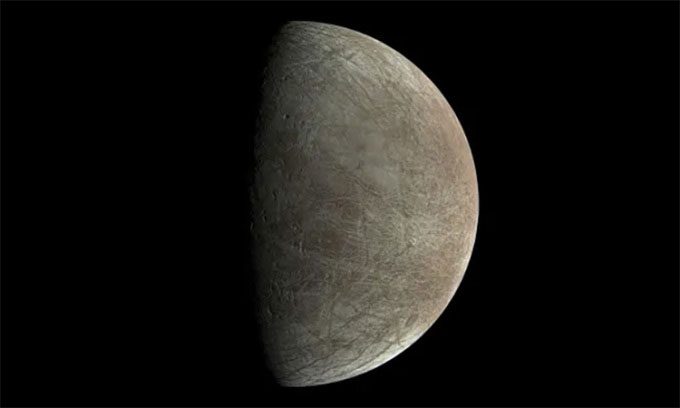A new study reveals that the oxygen levels on Jupiter’s moon Europa are lower than previously thought, narrowing the possibility that this moon could “support life.”
According to the Associated Press, the research is based on data collected from NASA’s Juno spacecraft, which flew past the moon in 2022 at a proximity of just 353 kilometers.

Image of Jupiter’s moon Europa taken by Juno from a distance of 1,500 kilometers in 2022. (Photo: NASA/JPL-Caltech/SwRI/MSSS/Björn Jónsson)
Oxygen, along with hydrogen, is produced when Jupiter’s radiation blasts through Europa’s ice crust. A team of European and American scientists calculated that approximately 6 to 18 kilograms of oxygen is generated on Europa’s surface every second, significantly lower than earlier estimates of around 1,100 kilograms of oxygen per second.
According to the recent study published in the journal Nature Astronomy on March 4, the amount of oxygen produced by Europa is considerably less than previous scientific estimates. This oxygen level could impact the moon’s subsurface ocean, which is believed to contain twice the amount of water found in all of Earth’s oceans combined.
Lead researcher James Szalay, affiliated with Princeton University in the U.S., stated that while “the range is significantly narrower than we previously thought, there is still much we can learn” about Europa.
The study was published in Nature Astronomy on March 4.
Currently, researchers do not know how much oxygen enters Europa’s atmosphere, how much remains trapped in the ice, and how much seeps into the subsurface ocean beneath the moon.
Previously, NASA considered Europa to be one of the most promising places in the Solar System for hosting environments suitable for some forms of extraterrestrial life.
The agency plans to launch the Europa Clipper spacecraft this fall. The spacecraft will conduct dozens of flybys at close distances to Europa while orbiting Jupiter.


















































